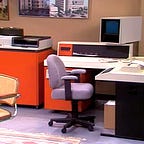It is all a horrible dream.
The Evil Within 2 is a more coherent experience than the first game, and that is both a pro and a con. These games are defined by dream logic and the abstract. The central narrative is less a story and more a stretched piece of duct tape that holds everything together. You spend time in the virtual recreation of someone’s mind. It never makes all that much sense but it doesn’t have to. Dreams are dreams. Nightmares are nightmares.
The suburban neighborhood of Union folds in on itself. What was once a beacon of normalcy and peace now stands as a twisted, claustrophobic thing that must be navigated. It is always dark. Monsters lurk behind every corner. That is The Evil Within 2 in a nutshell. It is all a bad dream but one that feels very, very real for the in-game characters who are experiencing it. The dream is created by a digital construct but it was still birthed by a mind. Sebastian Castellanos, the protagonist from the first game, is the central character in The Evil Within 2 and we see the experience almost entirely from his point-of-view. He never acts like he has a grip on things so we, like him, just roll with it.
AAA games, and blockbuster media in general, has fallen into the pattern of having to explain every little thing about themselves. Nothing can be implied, hinted at, or left in the margins. It must be shown. All questions must be answered. This, in and of itself, is just incredibly tiring. Media that talks at us rather than happening through us just makes for boring, dull nonsense (i.e. every Marvel movie, Star Wars newfound penchant for filling in every blank in its universe, and more). The Evil Within and The Evil Within 2 refuse to do this. While yes, the first game’s DLC did fill in some blanks, it also left even more questions unanswered. Give and take.
The dreams at play in The Evil Within 2 are porous and malleable. They flex and break and bleed and shift. Change is felt in every moment, and this creates a new tension beyond the general tensions felt in a survival horror game. This never goes away—everything can (and often will) change without warning. A seemingly normal hallway’s walls will grow spinning blades and start closing in on the player. Nothing is safe. Nothing is even close to being normal. Dreams can be awful things. Sometimes they feel real, too real. The Evil Within 2 is a digital nightmare dreamt in 1s and 0s. In-game characters know that none of what is going on is real but that doesn’t change the fact that it feels real. Death in Union (this digital world) is still death. There’s no waking up.
Beyond the shifting nature of dreams and nightmares is the horror of looking. The Evil Within 2 creates an atmosphere where the player feels like they’re always being watched. The nature of Looking is key to what The Evil Within 2 is doing. The camera hugs the player’s field-of-view. What lies beyond the margins becomes even more horrifying. The camera is a character even when it is separated from the gameplay itself. There is a serial killer in Union—he treats his work as art and always photographs his grisly acts. Yes, it feels like a monster-of-the-week Hannibal plot but, in all honesty, it works. And it is through this thematic intent where The Evil Within 2 is at its most inspired. A giant tendriled beast watches over Union with a giant eye protruding from a massive camera lens. It is on the nose but it works. We are always being watched and our every action feels chosen not by us, but by the game’s central villain—yes, this game is a few years old but I still don’t want to spoil much because not enough folks have played it. We are just another piece of this killer’s twisted art. There might as well be another camera lens behind what we are seeing as the player. It is always watching, hoping that we will contort into what it wants to see and what it wants violently express through us.
Perspective becomes violent. There is a boss relatively early on in the game called The Obscura. It is a fleshy, horrific thing that chitters and moans as it scurries across walls and ceilings alike. It is humanoid in form but stretched and all wrong. Its face extends too much and the flesh is loose and wavy with an old box-type Obscura camera for a face, hence the name. Every time it flashes, time slows down and it attacks. Whatever it is focused on is where it lends all of its aggression. And when you beat it, it doesn’t so much as die but rather ceases to be. It was there and now it is not. That is The Evil Within 2 in a nutshell. What is slightly familiar has become wrong and undefinable, everything is prone to some form of horrible change, and we learn early on that this digital dream does not belong to us. It is a form of corruption, a man-made spirit of horrible, perpetual change.
